Coming from manuka, a tree that grows only in New Zealand and southeastern Australia, manuka honey is different from other honeys, and it has gained a well deserved reputation.
With a really strong flavor, people often describe it as: earthy, oily, herbaceous, rich and complex, heather, aromatic, mineral, and slightly bitter.
The honey is made by our honey bees, Apis mellifera, from two plants: Leptospermum scoparium and/or Leptospermum polygalifolium. They grow uncultivated throughout New Zealand and southeastern Australia.
Is there a difference between manuka and mānuka?
No. The macron above “a” in mānuka is used to assist in pronunciation. Food businesses can use “manuka” or “mānuka” on food labels, referring to the same type of honey.
Berringa, the super manuka honey, is the name of the honey, which is made only from Leptospermum polygalifolium. It’s like a cousin of Leptospermum scoparium.
Kanuka Honey, also comes from Australia, but it shouldn’t be confused with manuka honey. Kanuka honey is made from a different tree, Kunzea ericoides, a cousin of Leptospermum, looking a lot like it. Some people say this type of honey is more valuable than manuka.
Manuka honey is dark, whereas kanuka honey is pale yellow and clear, with a delicate, sweet, slightly aromatic aroma and flavor.
How is manuka honey different from other honeys?
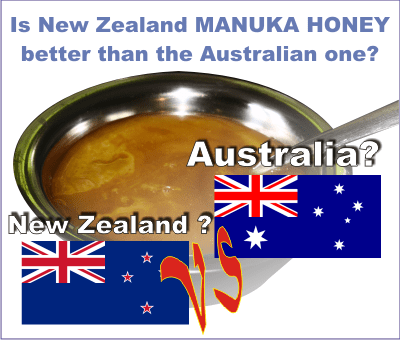 All honeys have antibacterial activity, but manuka honey has a non-peroxide activity that comes from the specific flower, and is quite different from the enzyme / peroxide activity found in the other honeys.
All honeys have antibacterial activity, but manuka honey has a non-peroxide activity that comes from the specific flower, and is quite different from the enzyme / peroxide activity found in the other honeys.
The non-peroxide antibiotic activity is due to methylglyoxal (MGO) and bee defensin. Most honeys contain very low levels of MGO, but manuka honey contains very high levels. Thus, the antibacterial activity is doubled.
Yet, this component is not the only one responsible for the honey’s antibiotic activity. In research, after the neutralization of GMO, manuka honey retained bactericidal activity due to unknown factors. Thus, MGO cannot be directly linked to and stated as the main content to the antimicrobial and antibacterial activities in manuka honey.
Though it is considered a superfood, or a wonderfood, please read the labels carefully when buying, because not all manuka honeys contain this unique non-peroxide activity.
Read this article for a better understanding and to check for real manuka honey: Deciphering manuka honey: UMF15+, MGO400, 24+ Bio Active, KFactor16, TA. And LOTS OF FRAUDS.
Characteristics of manuka honey:
- A dark color, greater than 62 mm pfund.
- Conductivity range of 347-867 μS/cm.
- A typical flavour specific to manuka, mineral, slightly bitter.
- A typical aroma of damp earth, heather and aromatic.
- It contains mānuka-type pollen.
- It has high amounts of dihydroxyacetone (DHA) and methylglyoxal (MG). They are to be found in other honeys, too, but in such smaller quantities that can be almost neglected.
- Other compounds: methylsyringate, leptosin, glyoxal, 3-deoxyglucosulose.
- Leptosperin and lepteridine are definitive fluorescence chemical markers for authentication of Mānuka honey
Moisture content: 18.70%
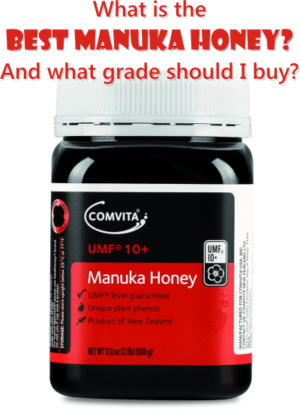 pH: 3.20–4.20
pH: 3.20–4.20
Total reducing sugars: 76.00%
Glucose: 36.20%
Fructose: 40.00%
Sucrose: 2.80%
Maltose: 1.20%
Calcium: 1.00%
Potassium: 1.00%
Sodium: 0.0008%
Magnesium: 1.00%
Specific gravity: 1.39
Electrical conductivity (mS/cm): 0.53
HMF [hydroxylmethylfufural] (mg/kg): 40.00
Ash content (g/100 g): 0.03
Phenolic compounds:
flavonoids: pinobanksin, pinocembrin, chrysin, luteolin, quercetin, 8-methoxykaempferol, isorhamnetin, kaempferol and galangin;
Total Flavonoids: 71.90 ± 0.03 mg CAE/kg
Phenolic acids: phenylacetic acid, phenyllacticacid, 4-hydroxybenzoic acid, kojic acid, 2-methoxybenzoic acid, syringic acid, and 4-methoxyphenyllactic acid.
Total Polyphenols: 0.89 ± 0.01 g GAE/Kg
Specific compounds present only in Leptospermum Scoparium, the floral source of New Zealand manuka honey: 3-Phenyllactic acid, 2’-Methoxyacetophenone, 2-Methoxybenzoic acid, 4-Hydroxyphenyllactic acid. The science definition also includes a DNA marker.
The therapeutic use of manuka honey
With the highest number of antioxidants and antibacterial properties, this honey is even considered to be the most powerful natural antibiotic, with a broad spectrum.
It destroys the following bacterial and fungal microorganisms:
-Escherichia coli (E.Coli)
-Staphylococcus aureos (Staph infections)
-Citrobacter freundii
-Proteus mirabilis
-Pseudomonas aeruginosa
-Salmonella typhimurium
-Streptococcus faecalis
-Streptococcus pyogenes – causes sore throats
-Helicobacter Pylori -this bacteria causes most stomach ulcers
-Methicillin- resistant Staphylococcus aureus (MRSA)
-Vanocomycin-resistant Enterococci (VRE)
-applied topically, assists the natural healing of skin ulcers, wounds, burns, boils, and cracked skin.
Recently, the cytotoxic effects of manuka honey on colon cancer have been proven.
The studies and analyses still continue. But I am not sure you will find a medical doctor telling you that this honey is better than antibiotics. 🙂 Nevertheless, tradition and alternative therapies tell us different.
Like in many other cases.
Yet, all researchers agreed that honeys, and particularly manuka honey, are natural food and medicines. Our science is on its way to decipher it and accept it in allopathic treatment.
Professor Peter Molan of the Honey Research Unit of the University of Waikato, New Zealand, says, “Manuka has a very broad spectrum of action. It works on bacteria, fungi and protozoa. We haven’t found anything it doesn’t work on among infectious organisms.”
Here is some Manuka Honey we can find on Amazon:
Flora – Manuka Honey 250 (16+), 8.75 oz honey.
Is manuka honey bad for our teeth and gums?
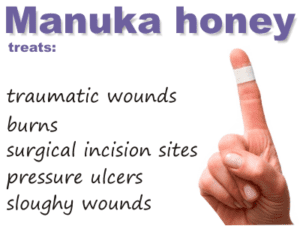 No.
No.
We are all warned that sugars cause dental cavities because they feed bad bacteria. But not Manuka honey.
In one study, 30 people chewed or sucked on “honey leather” (a flat candy made from dried honey) for 10 minutes, three times a day after meals, for three weeks.
The results showed that at the end of the study, these people had less plaque and fewer bleeding sites, than when they began.
Conclusion? If a candy sweetened only with Manuka honey comes on the market, it’s safe for your gums and won’t contribute to caries.
· Read about how good is propolis for our oral health.
What is UMF in manuka honey?
UMF stands for Unique Manuka Factor, an antibacterial property derived from the nectar of Leptospermum plants. UMF is a rating that adorns jars of medical-grade honey.
Thus, manuka honey contains two antibacterial activities that work synergistically – enhancing their effects. One is common to all honeys, it’s produced by an enzyme that is added to the nectar by the honey bee and it’s known as hydrogen peroxide antibacterial activity, and another one, a non-peroxide antibacterial activity.
On a jar of manuka honey, the rank UMF is followed by numbers starting from 10 to 20. This number is a standard way of describing the bacteria-killing power, with the highest UMF rating indicating the strongest antibacterial strength.
Another important difference from the other honeys is that UMF honeys are particularly stable, and their antibacterial activity is not destroyed by heat and light.
Why is UMF present in only some Manuka Honey?
The researchers don’t know yet. It could be from a subspecies of Leptospermum flowers or due to the type of the soil or the weather conditions. All we know is that bees gather Manuka honey from the nectar of the flowers of the Manuka bush (Leptospermum scoparium), and the tea tree (Leptospermum polygalifolium). Both trees grow wild on undeveloped, unspoilt land.
But some areas of Manuka and tea tree don’t produce honey with UMF property every year, and when they do, the concentrations can vary from batch to batch and year to year. That is why before releasing it to commerce, every batch of manuka honey is tested, to see if it contains the special UMF property.
Read the labels carefully, not all manuka honey has UMF.
Although it is such an incredibly good antibiotic, and so efficient in all skin wounds, burns, etc, persons with diabetes should not eat manuka honey, because of the GMO factor. GMO stands for methylglyoxal, a highly toxic substance.
The research hasn’t yet concluded if these substances, in combination with an unknown component found in honey, are still toxic to human cells, after ingestion.
We should be very cautious with this, because the quantity of MGO, which is very high (over 1000 ppm) increases over time. Read more about the laboratory tests done by now, together with the available clinical trials, is the post: Is manuka honey safe to eat.
Remember to read the labels properly and choose the best you need.
Table Grade: 100 – 400 MGO (5 – 15 UMF) – this is for eating!
Antibacterial Grade: 400 – 850 MGO (15 – 20 UMF) – this is for skin therapy!
Superior Antibacterial Grade: 850 MGO and above (25 UMF and above) – this is for very bad wounds.
Related articles on manuka honey:
- I want to buy manuka honey. What is UMF 16+, MGO 400+, Active?
- Is Manuka Honey safe to eat?
- Manuka honey – THE BEST to treat wounds, burns, skin infections.
- Is manuka honey a natural treatment for MRSA? Is it the best?
- Revamil medical grade honey. Comparison to manuka honey.
- The celebration of manuka honey. Is MGO700 better than MGO300? Is manuka honey toxic?
- How is manuka honey tested? Can we trust those tests?
- A new dispute on manuka honey market: Is it toxic or not?
- Fake manuka honey? Here are the true markers of genuine New Zealand Manuka honey!
Honeys considered to be as healthy as manuka honey:
- Sidr honey benefits for health
- Sidr Honey
- Tualang honey. What is tualang honey?
- Tualang honey benefits for health
- Maharishi Honey seems to be better than Manuka Honey! And is not the only one.
- How to kill antibiotic resistant bacteria!
References and pictures sources:
http://en.wikipedia.org/wiki/M%C4%81nuka_honey;
http://www.independent.co.uk/incoming/manuka-honey-is-the-bees-knees-1690599.html;
https://www.thehoneyfarm.com.au
Strawberry-Tree Honey Induces Growth Inhibition of Human Colon Cancer Cells and Increases ROS Generation: A Comparison with Manuka Honey.

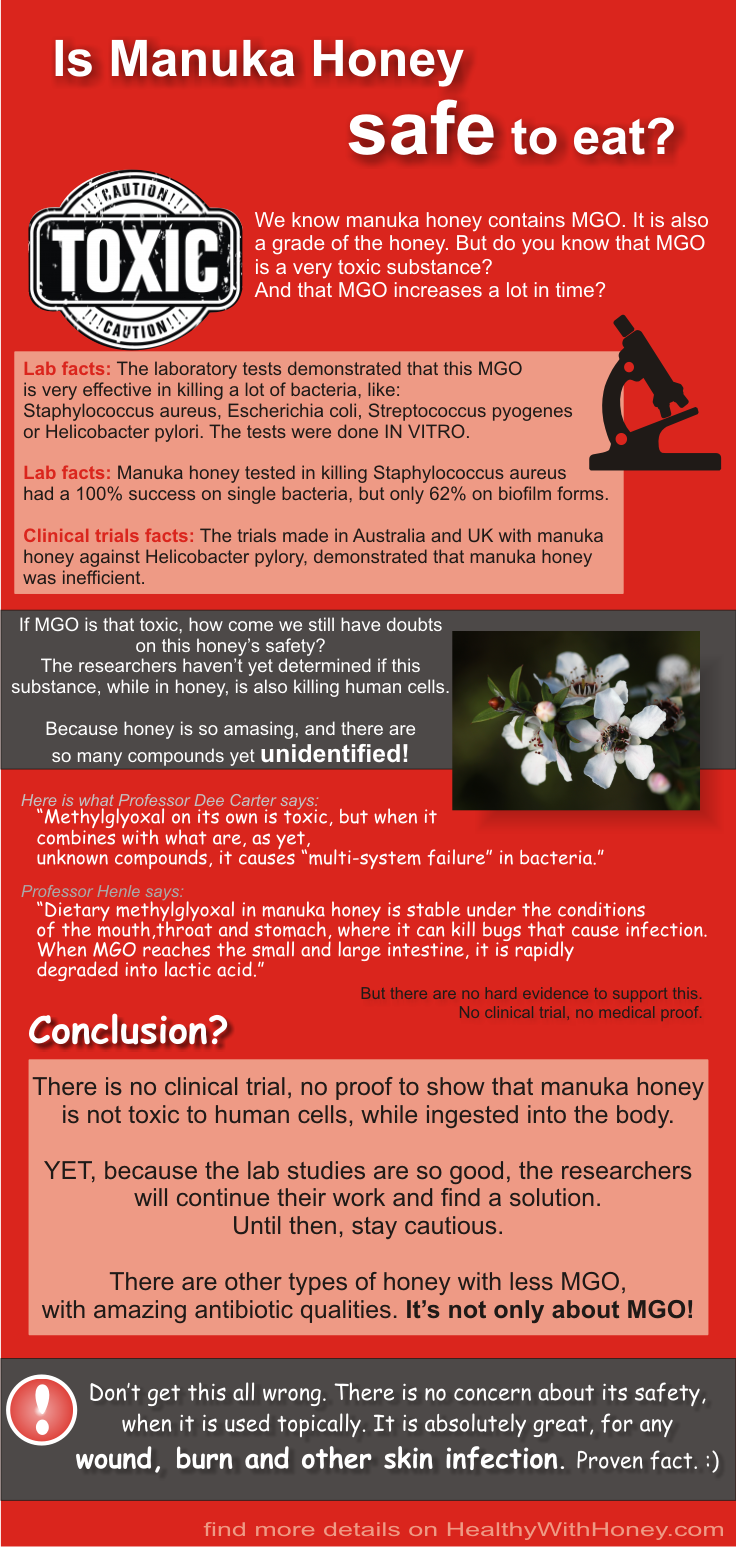
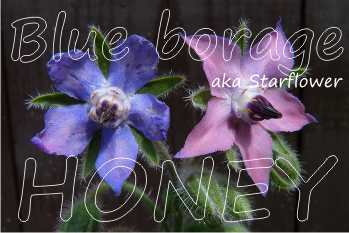


Hi.
There is a tree called (Talh) a type of accacia trees. Talh honey got the prize in a honey competition. is is very Anti-oxidant honey. the best quality for Talh honey Is in a city called (Ha’il) inSaudi Araba.. this web site can give you more information about it https://asalwafia.sa/
what is the best honey to help fight cancer?
Hi Carolyn,
There is little research and study for this. Big Pharma would simply laugh at such an idea. So far only some honeys have been studied for this. The best seems to be Gelam Honey (aka maleleuca aka cajeput) and combinations of honey with something else, like nigella sativa or ginger.
Other good honeys: tualang honey, neem honey and generally dark honeys, as they have more antioxidants. But any raw honey is good for cancer prevention.
And do not forget propolis. Propolis can prevent and treat LEUKEMIA and CANCER
Laura
do you have Raw active 15+ mgo 250 manuka honey and how much is it for 500 gr?
Hi Scott,
I don’t sell manuka honey, I buy it like everybody else. My recommendation is here: What is the best manuka honey? From what brand?. If you don’t like this brand, you can try any producer, of course, but due to the big amounts of frauds, I recommend you to try a UMF certified honey, and you can find a list of them here.
Laura